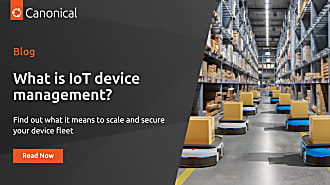nilayshrugged
on 24 March 2020
How to launch IoT devices – Part 4: When to ask for help
(This blog post is part of a 5 part series, titled “How to launch IoT devices”. It will cover the key choices and concerns when turning bright IoT ideas into a product in the market. Sign up to the webinar on how to launch IoT devices to get the full story, all in one place.)
First part: Why does IoT take so long?
Second part: Select the right hardware and foundations
Third part: IoT devices and infrastructure
The best laid plans of mice and men often go awry. By following this series so far, you hopefully have an idea and a plan on getting that idea to market (part 1). Then you selected hardware that works with your software (part 2), as well as infrastructure that supports you along the way (part 3). Do you feel in a good position to launch your IoT product and get a piece of that trillion dollar pie?
Even the most successful products go off-course during development. In addition, when roadmaps, plans and budgets start to go wrong, it is easy to lose stakeholder support. This blog will explain how using specialists to outsource and co-create parts of a product will benefit your product in the short and long term.
Managing the cost of IoT devices
Creating IoT devices is labour-intensive – specifically with engineering time – and the cost base of IoT projects can be mostly variable. This increases the burn rate of a budget, and results or outcomes will likely come in following years. Due to this, it is easy to lose senior stakeholder support, especially from stakeholders that already see IoT as risky.
In the short term, using a specialist enables your team to deliver outcomes, stay on a project plan/roadmap, and within budget. This is because specialists allow organisations to push through bottlenecks in a roadmap. When a budget cannot sustain high headcount, specialists allow product teams to smooth headcount to meet peak demands.
Specialists can also serve as a parallel work-stream during periods of high activity, which helps break through bottlenecks. This means product teams do not fall behind schedule due to early difficulties.

Managing risk in the short and long term
The risk of delivery of parts of the project is removed from a product team, and is moved to the specialist team. This has two main benefits – first specialists are in the best place to manage the risk. They have addressed and solved the problem multiple times and across a variety of customers. Second, specialists can be contracted to deliver a specific outcome, and so there is increased certainty over performance.
In the long term, there is a skills and knowledge exchange between specialists and product teams. This means future iterations of the product will benefit from the initial boost of skill that a product team gets.
Despite the clear benefits, specialists must be used strategically – to solve specific, actionable and difficult problems. Indiscriminate use across product development will lead to two problems. First, prolonged use will be expensive. Second, a team’s skills may be underdeveloped if a specialist performs too large a role, as key lessons are not learnt.
Summary
Specialists need to be used strategically – they can fix costs, help break through difficult parts of a project and provide a skills boost that benefits a team now and in the future. Contact us to discuss how Canonical engineers can boost your product, with both specific skill transfer and problem resolution.
Next time, in our final part to this series, we will introduce SMART START – a package of IoT products and solutions from Canonical, that take you through all the processes this series discussed. If you can’t wait until then, sign up to the webinar on How to launch IoT devices to get the full story, all in one place.



